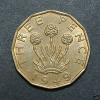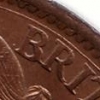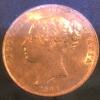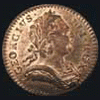Indeed.
Going back to this question, I'm wondering to what extent Court's estimates on several early 20th century scarcities, are accurate.
For those who are unaware, V.R.Court ran a short series of incredibly useful (and to this day still referred to) articles under the heading, "Major varieties of UK pennies 1902 to 1967", notably in the August and September 1972 editions of Coin Monthly.
Court's opinion on the mintages for these varieties (pre melt), are as follows:-
1902 low tide = 1,212,600 (sounds about right)
1903 open 3 = 37,300 (possibly slight underestimate?)
1905 F160 = 3,231,350 (sounds about right)
1908 F164 = 1,166,550 (sounds about right)
1908 F164A = 55,550 (yes, but see F176)
1908 F165 = 3,370,000 (sounds about right)
1909 F169 = 23,200 (sounds about right)
1913 F175 = 1,733,500 (given current availability, maybe an over estimate, or just not collected)
1913 F176 = 948,750 (as above)
1915 rec ear = 5,404,200 (maybe over estimate)
1916 rec ear = 16,129,850 (sounds about right)
1918H = 2,465,658 (probably about correct, but reported degree of scarcity in the immediate pre -withdrawal period may have been due to collector uptake)
1918KN = 1,195,142 (as above)
1919H = 4,787,556 (probably about correct)
1919KN = 422,044 (as above)
Mostly correct I'd say, but with a major discrepancy (in my view) between open 3 & 164A on the one hand, with F175 & F176, on the other.
If Court's figures on the 175 & 176 are correct, then it would suggest the vast majority met their fate in the melt, having not been specifically collected, except by default. Actually, that could well be the case given that there are a fair number of the extant population of 175's and 176's that are in high grade, whereas conversely that is manifestly not the case for the open 3 and the 164A.
Post melt, probably all four types are of roughly comparable rarity.
 Coinpublications.com
Coinpublications.com








